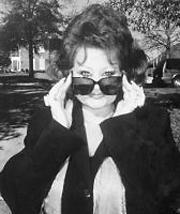WE MOCKED HER in the ’80s, but now Tammy Faye Bakker is back, resurrected as a campy cultural icon courtesy of this breezy, funny, and occasionally poignant documentary. Equal parts Behind the Music and 60 Minutes, the film lays out the episodes of the fallen woman’s life in neat segments introduced by sock puppets—reflecting Bakker’s entr饠into showbiz. (RuPaul Charles—yes that RuPaul—supplies narration, also lending to Eyes‘ droll tone.) Through TV clips and interviews, we quickly learn how poor 18-year-old Tammy Faye married Jim Bakker in 1961, then steadily progressed up the ranks of televangelism. “We believed that Christianity should be fun,” she explains, and their brand of entertainment subsequently helped build three national satellite networks. However, their gifts as performers were apparently only equaled by their ability to feud and fall out with a succession of (now) better-known TV preachers. (Jerry Falwell is depicted as the biggest villain of this bunch.)
THE EYES OF TAMMY FAYE
directed by Randy Barbato and Fenton Bailey
with Tammy Faye Bakker-Messner, Jim Bakker, and Pat Boone
runs August 11-17 at Egyptian
Yet Tammy Faye doesn’t seem particularly bitter about those betrayals or the famous PTL Network/Heritage Village meltdown that accompanied the 1987 revelation of her husband’s prior tryst with Jessica Hahn. (The troubles didn’t end there, however.) He went to jail; she went to rehab, but today emerges as a reasonably self-aware and surprisingly sympathetic documentary subject.
In choosing Tammy Faye to profile, filmmakers Randy Barbato and Fenton Bailey explained during SIFF, they centered on her “delicious combination of the spiritual and the materialistic,” says Barbato. Bailey sees an American, classist disdain for Jim and Tammy Faye-style religion, “and they became lightening rods for that prejudice.” Barbato continues, “It’s also that notion of white trash winning the lottery,” a stereotype that provokes easy laughter, then reconsideration.
However, says Bailey, her abundant empathy and warmth—extended to social pariahs, gays, and AIDS patients—is no act. “She has this phenomenal connection with people that is Clintonesque,” he notes. Like Clinton, too, her emotional fulsomeness is well suited to television. “She is kind of a lonely woman,” Barbato adds, “and the camera genuinely is her friend.”
Indeed, Tammy Faye’s very comfort with living her life on TV is what gives Eyes its immediacy and effect. “For us, the best way to tell a story is to let the subject matter inform you about how to tell the story,” declares Bailey. “Documentaries have suffered because they’ve been up a little backwater. They’ve been victims of their own rhetoric, which is this notion of objectivity.” In all her tacky glory, Tammy Faye thus serves as an admirable example of self- invention who—beneath the makeup—is as real as she believes herself to be.








